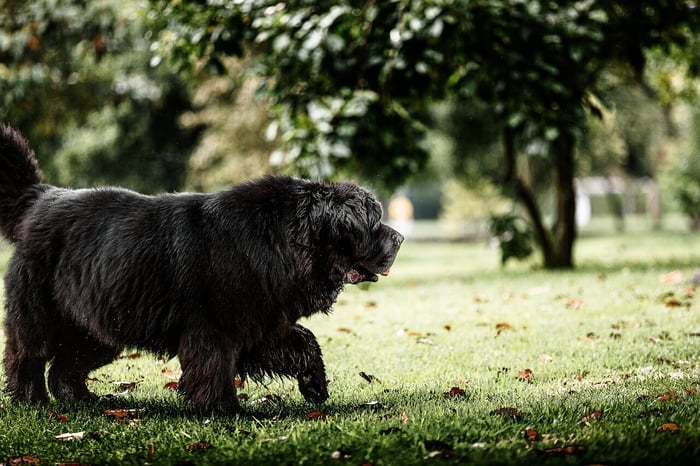Your dog’s eyes are among the most prominent features of expressing emotions. You might have noticed that a happy dog wag its tail and share its excitement. At the same time, a sad dog whines and whimpers and hide its face between legs, and sits down with a low energy level.
Often, you may notice tears or water in your dog’s eyes. It makes you question yourself, why is my dog crying? Dog’s eyes have tear glands that produce tear-like secretion to prevent dryness. If you notice your dog’s watery eyes, it doesn’t mean your puppy is crying. Several medical conditions are responsible for excessive tear production in dogs including, dirt, foreign object in the eyes, allergies, eye infection, conjunctivitis, corneal ulcers, etc. Since dogs use vocalizations like whines or whimpers for crying, they don’t cry with tears like humans to express their emotions.
If you are worried about your dog crying and having watery eyes, this post is for you. Read it to identify the medical reasons behind your dog’s watery eyes.
Medical Causes For Dog Crying
You might wonder if your pup can express its emotions with vocalizations, then why do your dog’s eyes seem like crying? Your dog’s tear duct functions in the same way as it do in your eyes. It keeps the eyes moist, prevents dryness, and helps remove dirt and wash away irritants.
A clear watery discharge indicates dirt, debris, allergies, or dryness from the wind blowing in your dog’s face. A mucousy discharge from one eye is the sign of a foreign body. A greenish-yellow or pus-like discharge might be an indication of eye infection.
Therefore, if you feel your puppy is crying with watery eyes, don’t ignore it. Understanding the medical reasons behind water discharge from your furry friend’s eyes is crucial because it may cause blindness or eye loss if left untreated.
The common medical issues related to your dog’s crying or watery eyes are below. Let’s have a look to learn more.
Allergies
Your dog may cry or suffer watery eyes if it is allergic to any environmental allergens, including smoke, dirt, food, pollen, perfumes, chemicals, etc. Your vet will identify the specific allergen that causes watery eyes by performing different tests. It may be time-consuming, but you can guess what routine changes make your dog feel better. Switching to an allergen-free diet, avoiding using chemicals nearby your pet, and cleaning when your dog is away may help in this case.
Corneal Ulcers
A transparent membrane that covers your dog’s eyeball is called the cornea. It prevents the eyeball from damage. Often, your pup cries and suffers watery eyes when it hurts its cornea during intense play or exploring through the thick brush.
Usually, corneal ulcers are accompanied by other symptoms like redness, excessive discharge, pawing at the eyes, excessive blinking, and swelling around the eye. Corneal ulcers can be profound and take time to treat. If you notice your dog crying with the symptoms of corneal ulcers, seek vet advice as soon as possible.
Conjunctivitis
Another cause of your dog’s watery eyes might be conjunctivitis. Basically, conjunctivitis is the inflammation of the pink tissue at the corners of your dog’s eyes. Several causes are responsible for eye inflammation, including dry eye, irritation, distemper, birth defects, tumors, allergies, injuries, and tear duct problems. Your pup may experience excessive blinking, redness, squinting, crusty eyes, and feeling hard to keep the eyes open.
The treatment of conjunctivitis includes anti-inflammatory medicines, antibiotics, pain medicines, and saline wash. Certain birth defects and blocked tear glands require surgery to correct. Seek medical advice as soon as you notice the symptoms.
Excessive Tearing or Epiphora
If you notice stained or smelly fur under your dog’s eyes, it might be due to epiphora. Several causes are responsible for a dog crying due to epiphora, including tear duct blockage, abnormal eyelashes, eye pain, corneal ulcers, tumors, etc.
The treatment of epiphora includes pain and anti-inflammatory medicines, topical medicines, and steroids to soothe the area and tear duct surgery.
Glaucoma
Glaucoma is one of the severe conditions that cause excessive tears in your dog’s eyes. It occurs due to excessive ocular pressure on the eyes. Symptoms include tears, bulging, or cloudy eyes. Glaucoma needs instant medical attention since surgery is required in extreme cases.
Dry Eye
Often, your dog might cry with a sticky clinging discharge from the eyes. Dry eye symptoms can occur if your dog’s eyes fail to produce enough moisture. These symptoms are combined with mucous and inflammation. The causes of dry eyes are autoimmune disorders, distemper, injured tear-producing gland, and corneal ulcers. The dry eye treatment includes artificial tears, antibiotic drops, immunosuppressant drugs. Often, if dog crying persists, surgery is required.
Breed Related Watery Eyes Issues
Brachycephalic dog breeds such as pugs, boxers, bulldogs, Pekingese have flat faces, protruding eyes, and shallower eye sockets. Such dogs are more susceptible to watery eyes due to tear drainage problems.
Entropion: The eyelids of brachycephalic breeds roll inwards,irritating eyes due to lashes. This condition is called entropion. In addition, the eyelids on these breeds don’t close fully due to bulging appearance and often need surgery to correct.
Ectropion: Contrarily, the outward rolling of eyelids causes a medical condition called ectropion. Mostly, the dog breeds with loose skin are more likely to suffer this issue and seem like crying with tears. These breeds include beagles, bloodhounds, some terriers, cocker spaniels, Saint Bernards, etc. These conditions require surgery to correct in a few cases.
Cherry Eye: This condition occurs when your dog’s eyelid glands fall out of position.Treatment includes pain medicines, steroids, and surgery in extreme cases.
Final Thoughts
Hopefully, this post will clear your confusion about “why my dog is crying.” Excessive tears are the result of medical issues with your dog’s eyes. These issues are eye infections, entropion, ectropion, cherry eyes, conjunctivitis, bacterial and viral diseases, etc. It doesn’t mean that your puppy is crying to express its emotions. If your dog has emotional issues, you can identify them by body language and vocalization. If you notice watery or mucousy discharge, abnormal size of your dog’s pupils, redness, pawing at the eyes, and closed eyes, seek your vet's advice as soon as possible and don’t try to treat these issues at home.








